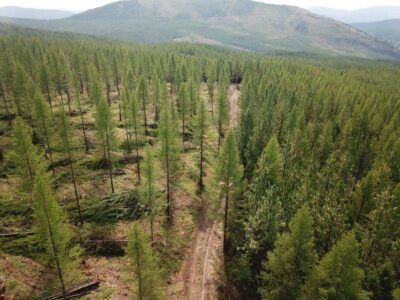Ninth Circuit takes up NRDC v. Salazar en banc
The Ninth Circuit today issued an order granting rehearing en banc in NRDC v. Salazar, meaning that an 11-member panel will now reconsider the 3-judge panel decision issued last July. (Hat tip: Endangered Species and Wetland Report.)
This is very good news, because the (split) panel decision was wrong in important respects. (Full disclosure — I signed onto an amicus brief in favor of rehearing en banc.) Of course the en banc court won’t necessarily reverse, but it will certainly give the case more attention, which it badly needs.
The cases arises out of conflicts between endangered species protection and Central Valley Project water contracts. In 2005, the Bureau of Reclamation renewed 41 long-term water service contracts, providing for diversion of 2.5 million acre-feet of water annually from the Sacramento-San Joaquin watershed. It did so without consulting with the Fish and Wildlife Service on the effect of contract renewal on the Delta smelt, which is listed as threatened under the Endangered Species Act. NRDC and other environmental plaintiffs sued, claiming that failure to consult violated ESA Section 7. A panel of the Ninth Circuit affirmed the district court’s holding that plaintiffs did not have standing to challenge renewal of one set of contracts (known as the Delta-Mendota Canal contracts) and that renewal of the other set (known as the Settlement Contracts) did not require ESA consultation because it was not discretionary. Judge Hug wrote for the majority, joined by District Judge Liam O’Grady from Virginia. Judge Richard Paez issued a strong dissent.
Both prongs of Judge Hug’s decision for the panel majority are inconsistent with governing precedent and, if they stand, will create serious problems for ESA implementation.
On standing, Judge Hug wrote that plaintiffs could not prove that they were injured by renewal of the Delta-Mendota contracts because those contracts included a shortage provision that would allow the Bureau to withhold water if necessary to avoid jeopardizing listed fish. In other words, because the Bureau might choose to protect the fish later, according to Judge Hug, plaintiffs could not show that they were injured by the failure to consult at the contract renewal stage. The problem with that formulation is that it misunderstands the well-established test for standing to assert a procedural right like the right to ESA consultation. Under the famous footnote 7 in Lujan v. Defenders of Wildlife, 504 U.S. 555 (1992), per Justice Scalia, a plaintiff seeking to enforce a procedural right need only show that following the required procedure might change the outcome in a way that would prevent threatened harm, not that it would certainly do so. Consultation might have changed the decision to renew the contracts or the details of their renewal. That’s all plaintiffs have needed to show to establish standing.
It’s worth noting that, as Eric has blogged about, the Supreme Court recently issued a major standing decision, Clapper v. Amnesty International, which repeatedly says that threatened injury must be “certainly impending” to support standing. But Clapper does not even mention procedural standing. In my view, it should not be read to cut back on the longstanding rule that plaintiffs do not need to show that injury is certain to have standing to protect their procedural rights. But I won’t be surprised if the Bureau and intervenor contractors argue otherwise. We’ll see what the en banc panel thinks.
On consultation, Judge Hug wrote that because the Bureau’s discretion “is limited” with respect to renewal of the Settlement Contracts, the ESA’s consultation provision was not triggered. That is not the law. The statutory text applies the consultation requirement to “any action” of any federal agency. If a federal action agency enjoys any discretion that might be exercised to reduce impacts on listed species, the ESA requires consultation. The Ninth Circuit most recently articulated that standard in its en banc decision in Karuk Tribe v. US Forest Service, 640 F.3d 979 (9th Cir. 2011), a decision Judge Hug somehow managed not to mention. I’ll be shocked if the en banc panel doesn’t take a broader view than Judge Hug did of the consultation requirement.
Stay tuned. The en banc process in the Ninth Circuit usually takes about 6 months to a year.
Reader Comments
4 Replies to “Ninth Circuit takes up NRDC v. Salazar en banc”
Comments are closed.








Thanks for the hat tip, Holly.
Thanks for the hat tip, Holly.